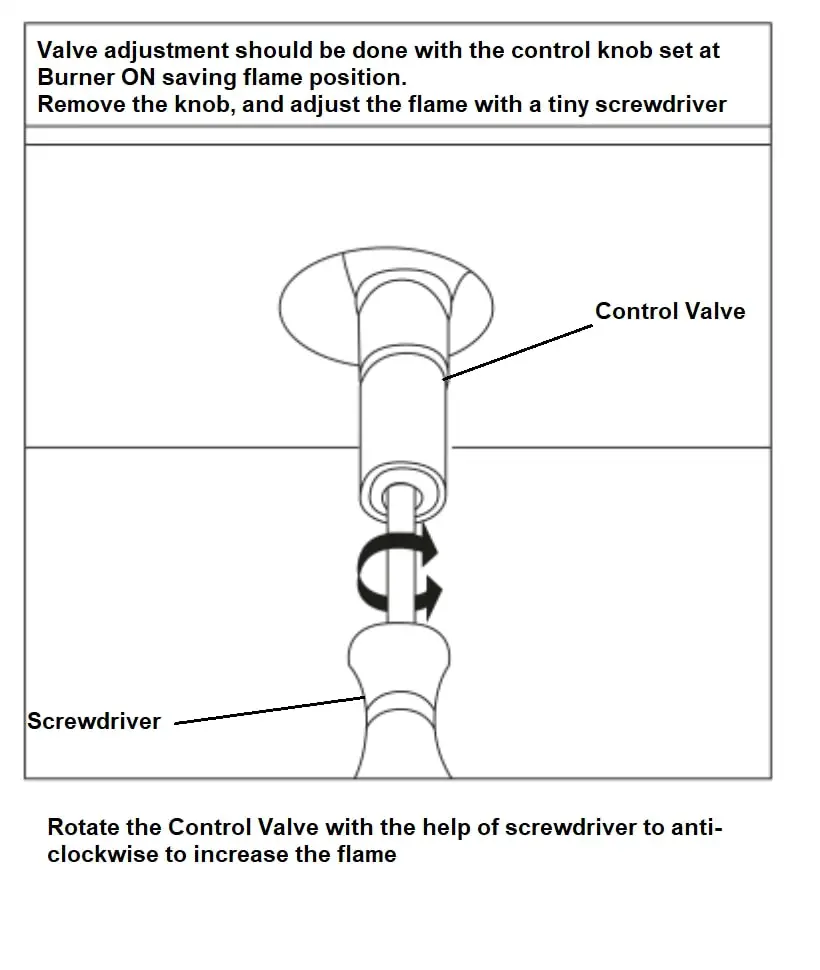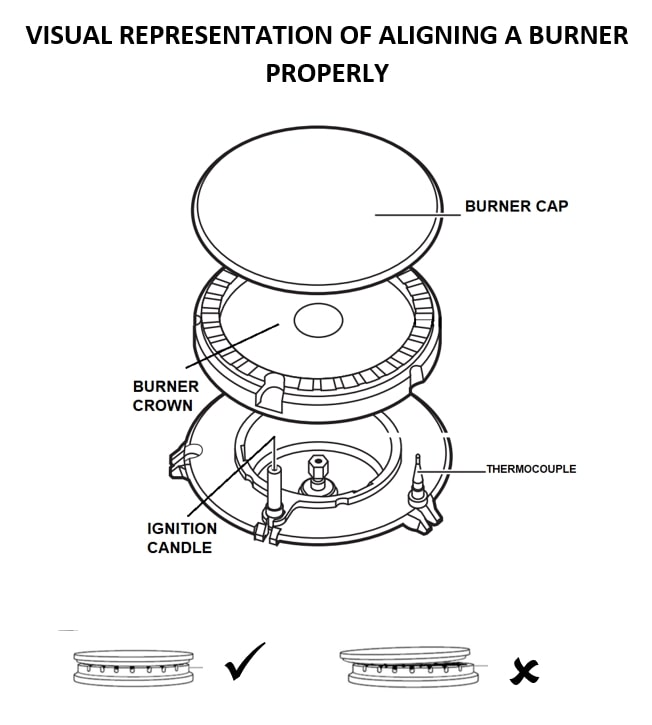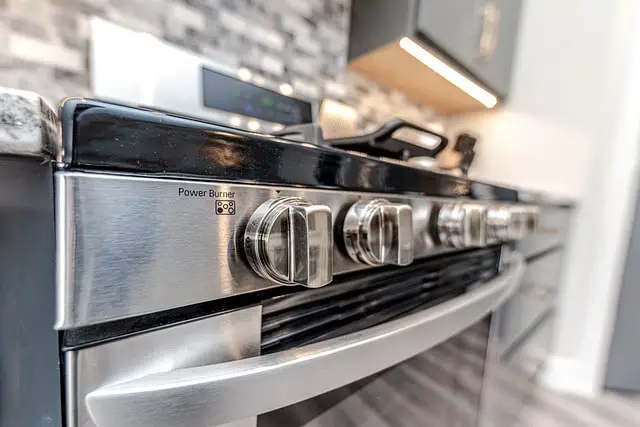
 Save Upto $850 ›
Save Upto $850 ›Many people prefer the power of a gas cooktop to give even heating to many of their favorite meals when it comes to cooking. However, one of the most aggravating issues that a gas stove might have is an uneven or very faint flame. Even on the maximum level, the flame is no stronger than it would be on the lowest setting.
Here we have tried to give the best possible and easiest solution to this query via which you can repair the flames of your gas stove by yourself without paying a single dime to any professional / expert.
Most of the time, a faint flame on your gas stove is not an indication that you need a repair. So, before you start digging through your toolbox to disassemble your stove, you might want to look at the actual burners on your stove.
The control valve on your gas stove is in charge of regulating the gas pressure. This is what permits you to alter the intensity of the flame throughout your stove’s many settings.
To adjust low flames to high or vice versa you need to:
Disclaimer: If your stove has been converted from Propane to LPG or vice versa then contact the manufacturer prior to doing this.

To have a further detailed insight into the subject matter, keep on reading this article, as we have tried to cover all aspects of providing the best solution to fixing low flame on a gas stove.
Do not attempt to do anything with gas regulator if you are a newbie as it will cause more problems than solving the previous one.
Therefore, in order to avoid any conflict we recommend you to:
Well, the above mentioned points were described for those who want to enhance the efficiency of their gas stove by adjusting the flames on it.
But if you already have done this and still couldn’t get any good results then there could be a reason that your gas stove is causing a low flame due to some fault.
A low burner flame can be caused by various reasons and here. However, there are some famous reasons which has caused low flame on a gas stove.

Burner plays a vital part in providing the flames on a stove and therefore, vastly they are responsible if there is any thing malfunctioning with the flames or something like that.
If the burner cap is not properly positioned, it might result in a low flame because there is not enough gas getting to your Burner Head, thus the gas is escaping out of it due to this leakage.
You can also observe that your gas stove’s flame is lop-sided and uneven and, in many cases, this happens dint to the positioning of the burner which also causes problems for lighting the burner and your gas stove take quite a long time also in this regard.
It is normal for the flames directly beneath the grate legs to be lower than the other flames. The grates shouldn’t directly contact the flames.

One of the most common reasons for weak or uneven flames on your gas stove is a dirty/filthy burner head. It is something that can easily happen with the passage of time.
The burner head is encircled by tiny openings that allow gas to escape and be ignited, resulting in flames. These slots, however, are prone to becoming clogged/blocked by oil, spills, splashes, or any other food particles from your daily cooking.
Clean the burners properly with the a good reputed cleaner.
Here we recommend you to use the solution of a cleaning paste, by combining one part vinegar, two parts baking soda, and a squirt of dish soap. Apply the paste with a soft sponge wait for 10 to 15 minutes and then scrub the grease.
If it doesn’t help you then THE BEST SOLUTION here is:

But the problem doesn’t stop only there, when cleaning your stove, these items can even be pushed within the slots by sponges.
If you are of the view that the flames will burn away these particles, then you are absolutely wrong because they do not get burnt away rather, they create a hindrance in operationalizing your gas stove making it much more adverse than it actually is.
Through a tiny, very precise hole, the gas orifice dispenses fuel into the combustion or burner tube. The orifice distributes just the appropriate amount of fuel, which is combined with precisely the right amount of air to produce the ideal flame in your device.
The most frequent reason why a gas burner clicks but doesn’t light is a clogged gas burner orifice. After a pot boil over, something frequently occurs.
Although it is not the main issue in our instance, it is still a good idea to examine the gas stove’s orifices because you are performing a complete investigation.
The orifice should be cleaned by simply rinsing it under water and blowing air over it. An old toothbrush can also be helpful here.
If your brass jet / nozzle is clogged then it would be appropriate to clean it with needle. Never use a toothpick, because toothpicks can break down and make the matter more adverse. complete guide on cleaning brass jet / nozzle can be found here.
If you liked our article so far then subscribe to our weekly newsletter and get awesome and best home remedies, which no one else knows of, directly into your mailbox.
Yes, you can adjust the pilot light on your gas stove with the same method as mentioned above for adjusting flames on gas stove. You can use a screwdriver to open your gas oven’s valve control and screw it in anti-clockwise or clockwise direction as per your need.
Low heat on a stove can be defined as ‘any temperature between 200 and 300 degrees Fahrenheit (93 to 149 degrees Celsius)’.

8cm (high) is the proper height for ordinary use.
The average height of a flame is determined by measuring it vertically, up, and down. Depending on whether the flames are directed horizontally, backward, or forward, it can be shorter than the length of the flame.
The “fire triangle” is a term used frequently to describe oxygen, heat, and fuel. If you take away any one of these four items, there won’t be a fire or it will go out. Similar to how they are important when regulating the flames on a gas stove.
An improper conversion of the range or cooktop from natural gas to LP (Liquid Propane) use could be the cause of the burner or oven flames being excessively high or uneven (for example, touching or above the grate).
Lower flame temperature is caused by an excess of air. Accordingly, the system receives less heat. Moreover, additional air must be heated to flue gas temperature, which requires additional energy.
So, if you think we have given key details into the subject matter and if this was helpful to you then please let us know in the comment below.